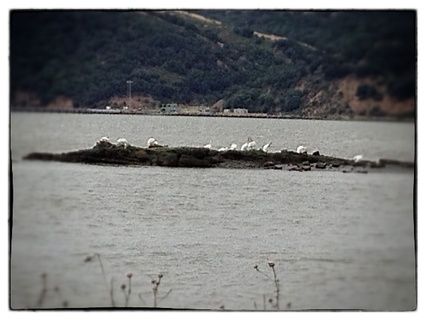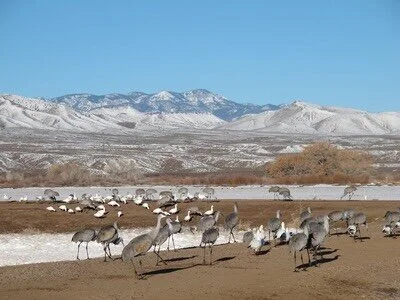Eyelids closed, I postpone viewing the new day. I linger in dreamtime until a familiar honking breaks the morning stillness in Benicia, California, a waterside community thirty miles north of San Francisco. The world outside my window rests under the great Pacific flyway, the north-south path of North American migratory birds.
 Eyes wide open; I peer through the bedroom window in time to see Canada geese, a trio in flight, noisily bound elsewhere, calling to one another, beaks pointed, necks stretched; chests lifted upward, wings flapping hard. I track their flight over Southampton Bay, the cove on Benicia’s west end. The pale gray clouds of the marine layer blanket the opposite shore of the Carquinez Strait. This wide watery ribbon funnels fully half of California’s water drainage through a deep channel on its way to the Pacific Ocean.
Eyes wide open; I peer through the bedroom window in time to see Canada geese, a trio in flight, noisily bound elsewhere, calling to one another, beaks pointed, necks stretched; chests lifted upward, wings flapping hard. I track their flight over Southampton Bay, the cove on Benicia’s west end. The pale gray clouds of the marine layer blanket the opposite shore of the Carquinez Strait. This wide watery ribbon funnels fully half of California’s water drainage through a deep channel on its way to the Pacific Ocean.
Cuddling under a soft, embroidered, cotton quilt, while I marvel at the waterfowl, Franz Kafka’s translated words come to mind.
You do not need to leave your room.
Remain sitting at your table and listen.
Do not even listen, simply wait, be quiet, and solitary.
The world will freely offer itself to you to be unmasked,
it has no choice, it will roll in ecstasy at your feet.
The universe blesses Benicia with a significant year-round presence of waterfowl—mallards, coots, the great blue heron, and snowy egret. Spring brings an upswing in activity: nesting and the annual migration of some birds to points north.

